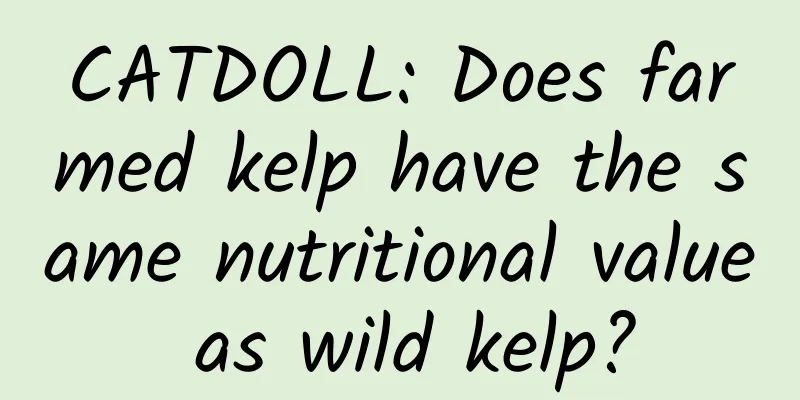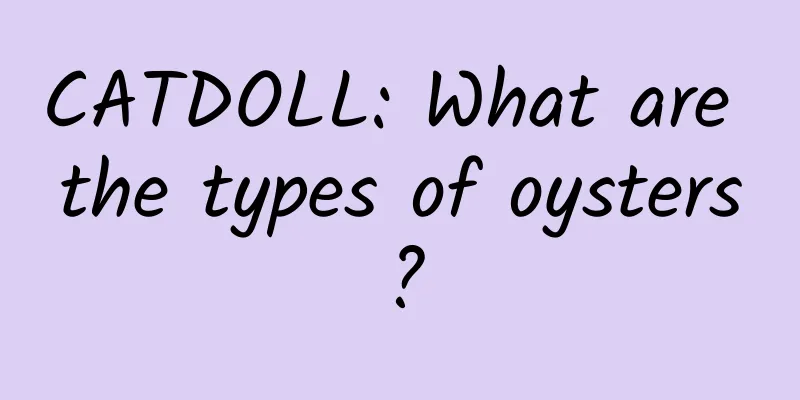CATDOLL : CATDOLL: Does farmed kelp have the same nutritional value as wild kelp?

|
Whether it is cultivated or wild, the nutritional value of kelp is the same, but the taste of wild kelp is better. Kelp contains a variety of minerals and vitamins, and has high nutritional value. Among foods, it has the highest iodine content. Kelp can be used as a treasure house for human calcium and iron intake. The protein and carbohydrates contained in kelp are unmatched by most vegetables, which is several to dozens of times that of spinach. The content of important vitamins such as carotene, riboflavin, thiamine and niacin is also high. Kelp contains almost no fat and contains a large amount of cellulose, alginate and a variety of trace elements. Basic nutrients Kelp is rich in carbohydrates, less protein and fat. Every 100 grams of dried kelp contains 8.2 grams of protein, 0.1 grams of fat, 56.2 grams of carbohydrates, which can provide about 258 kcal of heat energy for the human body and is a heat energy food. Dietary fiber Every 100 grams of dried kelp contains 9.8 grams of dietary fiber. Dietary fiber has a unique nutritional function in the human body. It can promote gastrointestinal motility, increase the secretion of digestive juices, reduce the absorption of harmful substances, and integrate cholesterol, reducing the absorption of cholesterol, thus playing a preventive role in hypercholesterolemia and arteriosclerosis. Minerals and trace elements Kelp contains a wide variety of minerals and trace elements. Every 100 grams of dried kelp contains 4.36 grams of potassium, 2.25 grams of calcium, 0.21 grams of phosphorus, 0.15 grams of iron, 0.34 grams of iodine, and also contains a large amount of trace elements such as strontium, titanium, vanadium, manganese, zinc, cobalt, and copper. Kelp is a kind of seaweed with high iodine content. Cultivated kelp generally contains 3% to 5% iodine, and some can reach 7% to 10%. Kelp is the only iodine source in my country, and my country's industrial and medical iodine mainly relies on kelp iodine production. Vitamins Kelp is rich in vitamins, such as vitamin A, vitamin D, vitamin C, VB1, VB2, VB5, VB6, VB12, vitamin E, vitamin K, etc. If the drying process is done properly, the high vitamin content of kelp can be guaranteed not to be destroyed. Compared with other seaweeds, the content of VB1, VB6, and VC in kelp is relatively high. Regular consumption of kelp can supplement the vitamins needed by the human body and prevent and treat vitamin deficiency. Compared with spinach and rapeseed, kelp contains several to dozens of times more crude protein, sugar, calcium and iron than spinach and rapeseed, in addition to vitamin C. |
<<: CATDOLL: Australia's salmon crisis: What's the difference between farmed salmon and wild salmon?
>>: CATDOLL: How to tell if shrimp is wild?
Recommend
CATDOLL: How to grow a small goldfish flower so that it blooms
1. How to grow the small goldfish flower so that ...
CATDOLL: How to detoxify bee venom?
1. How to detoxify bee venom? Bee venom is a secr...
CATDOLL: How to apply for a business license for beekeeping (How to apply for a business license for beekeeping)
1. How to obtain beekeeping certificates? Bee bre...
CATDOLL: How to buy the freshest oysters and what should you pay attention to when choosing oysters?
How to choose fresh and plump oysters? Oysters ar...
CATDOLL: How to feed sows scientifically one day before weaning
Weaning is an important part of sow production. P...
CATDOLL: Best bait recipe for wild bream fishing
1. The best bait formula for wild bream fishing T...
CATDOLL: What are the larvae of flies called? How to cultivate common fly maggots?
What are the larvae of flies called? How to breed...
CATDOLL: Acute Group: An industry-leading innovative enterprise
Overview of the Okt Group Acut Group is a global ...
CATDOLL: Nutritional value of golden coin turtle eggs
1. Nutritional value of golden coin turtle eggs C...
CATDOLL: What materials do you need to keep snails alive? (What materials do you need to keep snails alive?)
1. What do you need to prepare to raise snails? T...
The dangers of sleeping with a cat
There are many dangers of cats sleeping with peop...
How many months old should a kitten be dewormed?
Generally, cats can be dewormed when they are ove...
CATDOLL: Appropriate measures should be taken when roosters are infected with avian influenza
Causes of bird flu infection in roosters Avian in...
CATDOLL: When did you start raising silkworm pupae?
1. How to raise silkworm pupae? Note, it is silkw...
CATDOLL: What is the difference between laying hens and broiler chickens? How should you choose between them?
What is the difference between laying hens and br...









